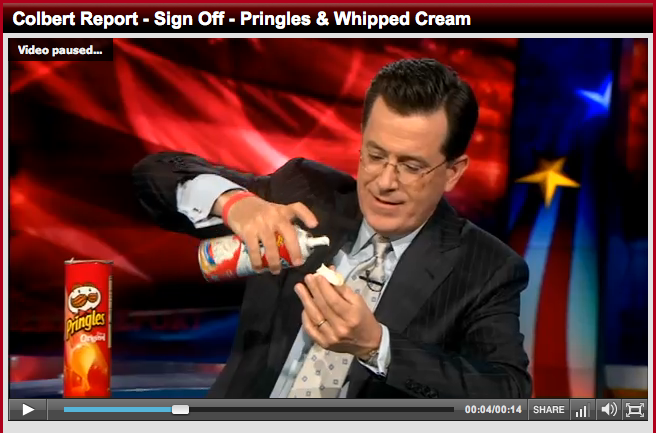
Image Credit: screen capture from ColbertNation.com
Food policy can be pretty disheartening stuff: anything that combines environmentalism, worker's rights and public health in a single topic is likely to include bad-to-terrible news pretty much every day. With the Senate underfunding the Child Nutrition Act, bluefin tuna set to go extinct and Dirt! The Movie preparing to air on PBS, even my fairly-high tolerance for crisis fatigue was wearing thin this week. Thankfully, Stephen Colbert was there to talk me off the ledge. As is often the case, Colbert managed to make life livable with his pringle-and-whipped-cream-like blend of irony and humor-- two remarkable human capacities that are often undervalued because they elude satisfactory explanation by rhetorical, literary or philosophical models. While even Jon Stewart's comedic analysis of politicians and pundits can often be as depressing as it is amusing, Colbert's satiric send-ups consistently manage to wink their way through all kinds of maddening news stories and leave me with a crisp, clean finish. His new "Thought for Food" segment lives up to those expectations. Rather than attempting (and almost certainly failing) to explain the jokes, I thought I'd share a few videos and comment as needed. More on Colbert, corn-surpluses, advertising and unholy sandwiches after the break.
Recent comments
2 years 29 weeks ago
2 years 44 weeks ago
2 years 44 weeks ago
2 years 50 weeks ago
3 years 4 weeks ago
3 years 4 weeks ago
3 years 4 weeks ago
3 years 6 weeks ago
3 years 6 weeks ago
3 years 6 weeks ago